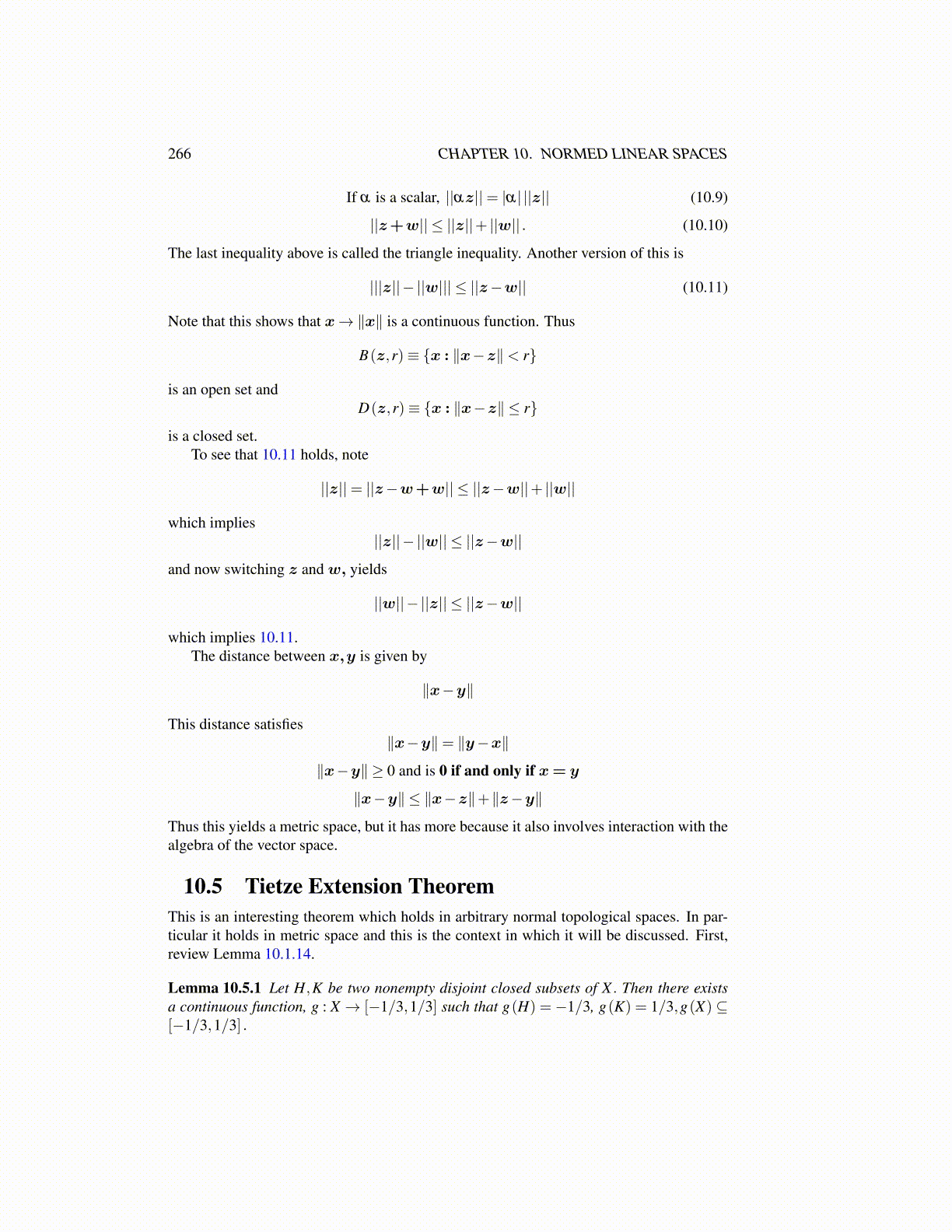
266 CHAPTER 10. NORMED LINEAR SPACES
If α is a scalar, ||αz||= |α| ||z|| (10.9)
||z+w|| ≤ ||z||+ ||w|| . (10.10)
The last inequality above is called the triangle inequality. Another version of this is
|||z||− ||w||| ≤ ||z−w|| (10.11)
Note that this shows that x→∥x∥ is a continuous function. Thus
B(z,r)≡ {x : ∥x−z∥< r}
is an open set andD(z,r)≡ {x : ∥x−z∥ ≤ r}
is a closed set.To see that 10.11 holds, note
||z||= ||z−w+w|| ≤ ||z−w||+ ||w||
which implies||z||− ||w|| ≤ ||z−w||
and now switching z and w, yields
||w||− ||z|| ≤ ||z−w||
which implies 10.11.The distance between x,y is given by
∥x−y∥
This distance satisfies∥x−y∥= ∥y−x∥
∥x−y∥ ≥ 0 and is 0 if and only if x= y
∥x−y∥ ≤ ∥x−z∥+∥z−y∥
Thus this yields a metric space, but it has more because it also involves interaction with thealgebra of the vector space.
10.5 Tietze Extension TheoremThis is an interesting theorem which holds in arbitrary normal topological spaces. In par-ticular it holds in metric space and this is the context in which it will be discussed. First,review Lemma 10.1.14.
Lemma 10.5.1 Let H,K be two nonempty disjoint closed subsets of X . Then there existsa continuous function, g : X → [−1/3,1/3] such that g(H) =−1/3, g(K) = 1/3,g(X)⊆[−1/3,1/3] .